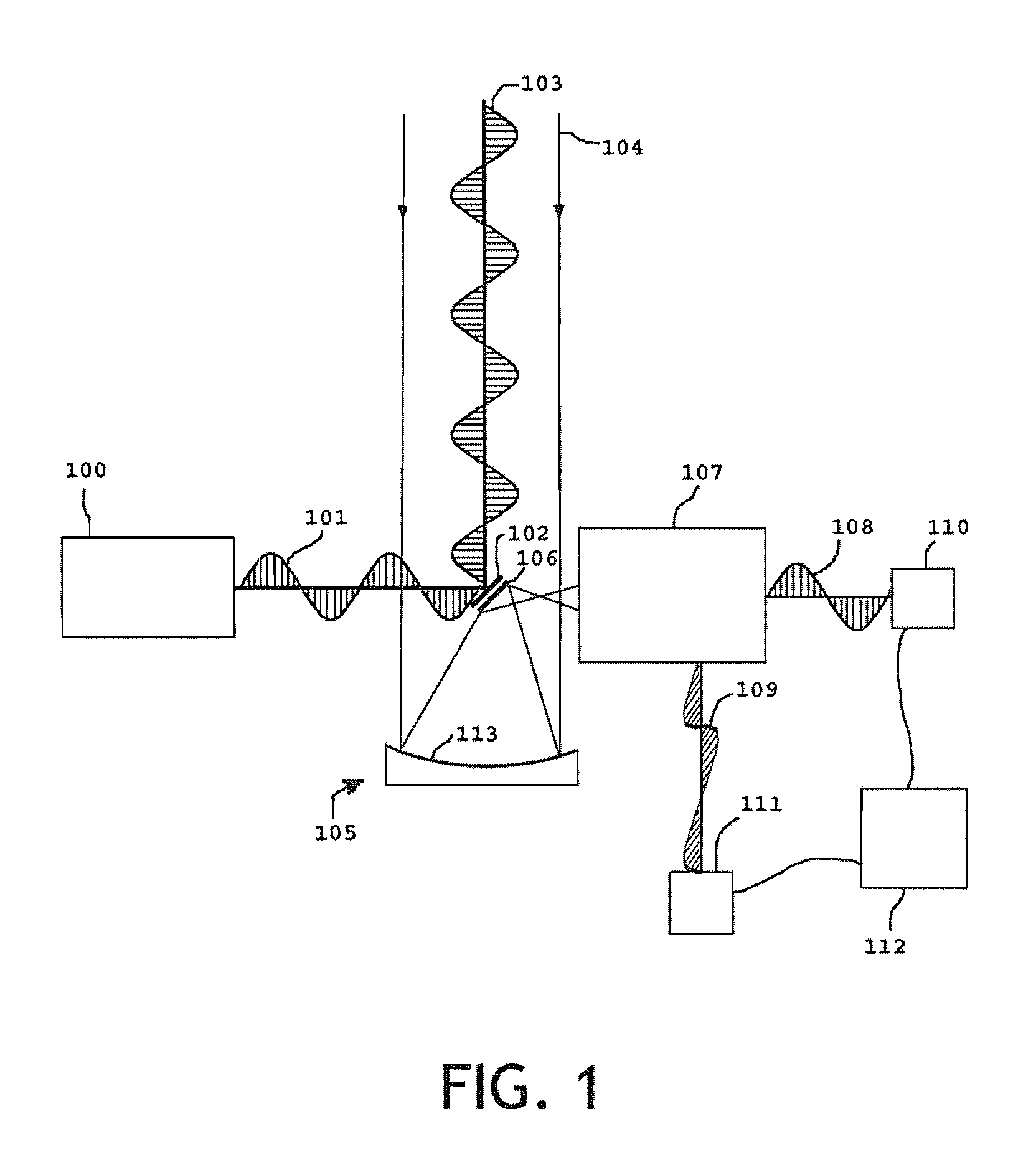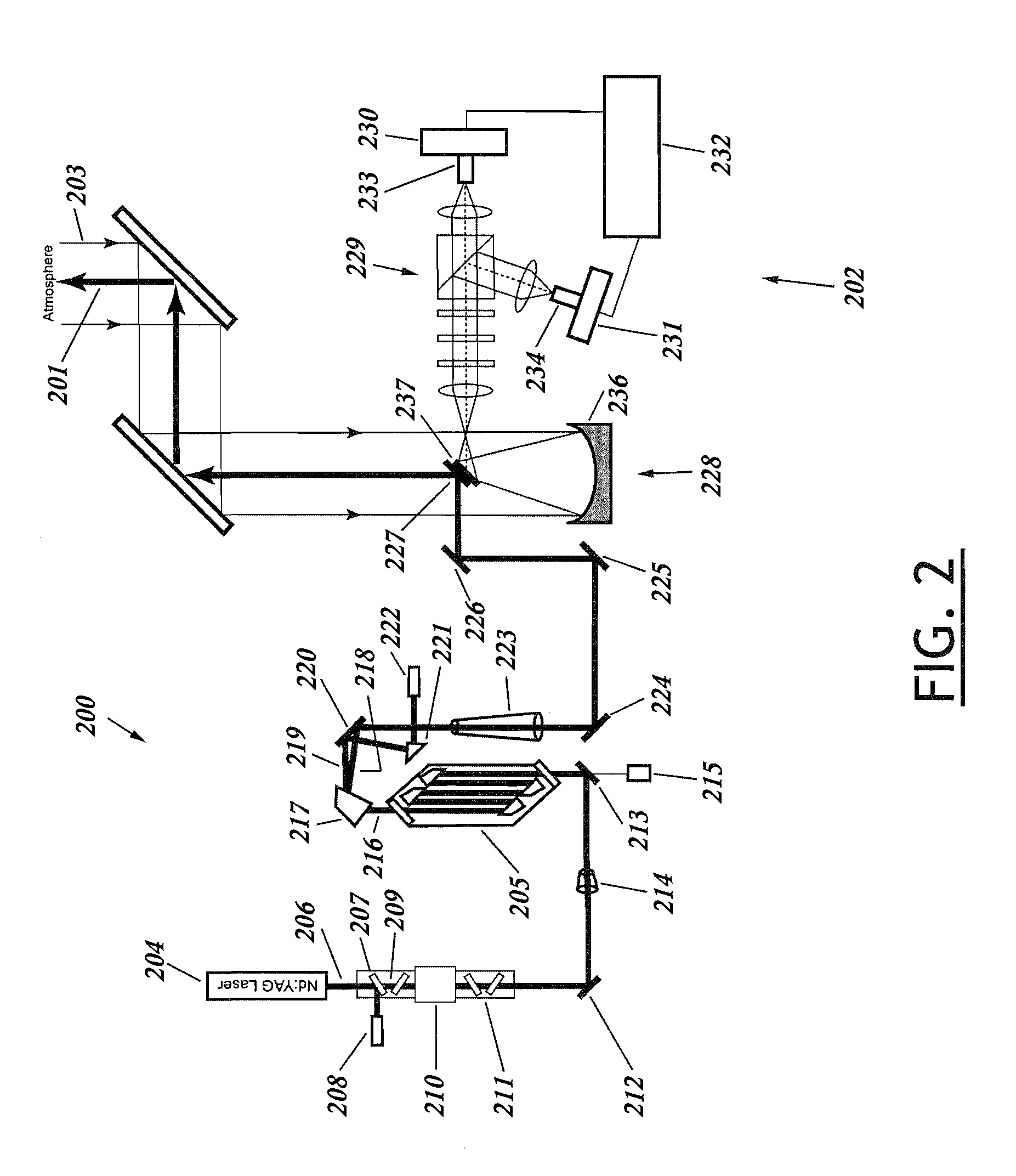Polarization lidar for the remote detection of aerosol particle shape
a lidar and aerosol particle technology, applied in the field of laser radars or lidars, can solve the problems of limited capabilities of current methods of remotely obtaining information about aerosol particles, the threat of intentional release of biological, chemical or radiological contaminants into the atmosphere, and the threat to civilian populations, so as to achieve the effect of safe dispersing the energy of beam components
- Summary
- Abstract
- Description
- Claims
- Application Information
AI Technical Summary
Benefits of technology
Problems solved by technology
Method used
Image
Examples
Embodiment Construction
[0052]In the following description, an embodiment of the invention is set forth first in a high level depiction to describe the basic principles involved in using energy of a known polarization projected into the atmosphere to remotely determine aerosol particle characteristics. An embodiment of the invention is then described in detail in the context of a high pulse energy and Raman shifted Eye-safe Aerosol Lidar (REAL™) system which transmits single-plane linearly polarized energy and divides and separately detects polarized backscattered radiation in the same polarization plane as the transmitted beam and in a plane perpendicular to the polarization plane of the transmitted beam. Indeed, the invention has a number of benefits and provides useful results in this regard. A further embodiment involving multiple beams and selective induced fluorescence is then described. However, it will be appreciated that various aspects of the present invention are not limited to such lidar applic...
PUM
 Login to View More
Login to View More Abstract
Description
Claims
Application Information
 Login to View More
Login to View More - R&D
- Intellectual Property
- Life Sciences
- Materials
- Tech Scout
- Unparalleled Data Quality
- Higher Quality Content
- 60% Fewer Hallucinations
Browse by: Latest US Patents, China's latest patents, Technical Efficacy Thesaurus, Application Domain, Technology Topic, Popular Technical Reports.
© 2025 PatSnap. All rights reserved.Legal|Privacy policy|Modern Slavery Act Transparency Statement|Sitemap|About US| Contact US: help@patsnap.com



